 Loading...
Loading...A
- AF-S17-35
- AF-S NIKKOR 28
- AF-S NIKKOR 28-300mm f/3.5-5.6G ED VR3
- AF-S NIKKOR 28–70mm2
- AF-S NIKKOR 28mm f/1.4E ED5
- AF-S NIKKOR 28mm f/1.8G
- AF-S NIKKOR 3002
- AF-S Nikkor 300mm f/2.8D IF-ED II
- AF-S NIKKOR 300mm f/2.8G ED VR II2
- AF-S Nikkor 300mm f/4D ED-IF
- AF-S Nikkor 300mm f/4D IF
- AF-S Nikkor 300mm f/4D IF-ED3
- AF-S NIKKOR 300mm f/4E PF ED VR5
- AF-S NIKKOR 35mm f/1.4G2
- AF-S NIKKOR 35mm f/1.8G ED5
- AF-S NIKKOR 400mm f/2.8 ED VR
- AF-S NIKKOR 400mm f/2.8E FL ED VR8
- AF-S NIKKOR 400 MM F-2.8G ED VR4
- AF-S Nikkor 503
- AF-S NIKKOR 500mm f/4 ED VR
- AF-S NIKKOR 500mm f/4E FL ED VR6
- AF-S NIKKOR 500mm f/4G ED VR4
- AF-S NIKKOR 500mm f/5.6E PF ED VR7
- AF-S NIKKOR 50MM F/1.4G3
- AF-S NIKKOR 50mm f/1.8G5
- AF-S NIKKOR 50mm f/1.8G (Special Edition)5
- AF-S NIKKOR 58mm f/1.4G4
- AF-S Nikkor 600mm f/4D IF-ED II
- AF-S Nikkor 600mm f/4DII IF
- AF-S NIKKOR 600mm f/4 ED VR
- AF-S NIKKOR 600mm f/4E FL ED VR5
- AF-S NIKKOR 600MM F-4G ED VR6
- AF-S Nikkor 70-2004
- AF-S NIKKOR 70-200mm f/2.8E FL ED VR5
- AF-S NIKKOR 70-200mm f/2.8G ED VII2
- AF-S NIKKOR 70-200mm f/2.8G ED VRⅡ2
- AF-S NIKKOR 70-200mm VR2
- AF-S NIKKOR 800mm f/5.6E FL ED VR8
- AF-S NIKKOR 80-400
- AF-S NIKKOR 80-400mm f/4.5-5.6G ED VR6
- AF-S NIKKOR 853
- AF-S NIKKOR 85mm f/1.4G3
- AF-S NIKKOR 85mm f/1.8G4
- AF-S NIKKOR ED
- AF-S NIKKOR ED 300
- AF-S Nikkor ED 300mm f/2.8D IF
- AF-S Nikkor ED 300mm f/2.8DII IF
- AF-S OX NIKKOR 18-200mm f/3.S-S.6G EO VR II
- AF-S OX Zoom-Nikkor ED 12-24mm f/4G IF
- AF-S TC-20E III
- AF-S Teleconverter TC-14E III2
- AF-S Teleconverter TC-20E III
- AF-S VR7
- AF-S VR 10
- AF-S VR 200-400mm f/4G IF ED
- AF-S VR 200mm f/2G IF-ED
- AF-S VR 24-120 f/3.5-5.6G IF-ED
- AF-S VR 28-300mm f/3.5-5.6GED
- AF-S VR 300mm f/2.8G IF-ED
- AF-S VR 70-200
- AF-S VR 70-300
- AF-S VR DX 16-85MM
- AF-S VR DX 55-200MM
- AF-S VR DX zoom Nikkor 18-200/3.5-5. 6G ED2
- AF-S VR IF-ED
- AF-S VR II 70-200MM F-2.8G ED VR II
- AF-S VR Micro 105
- AF-S VR Micro 105mm f/2.8G IF-ED
- AF-S VR Micro 105mm f/2.8G IF-ED Lens Errata
- AF-S VR Micro-Nikko
- AF-S VR Micro-Nikkor 105mm2
- AF-S VR Micro Nikkor 105mm / f2.8G2
- AF-S VR Micro-Nikkor 105mm f/2.8G IF-ED4
- AF-SVR Micro-Nikkor 105mm f/2.8 IF-ED
- AF-S VR Micro-Nikkor 10Smm fl2.8G IF-ED
- AF-SVR Nikkor 300mm f/2.8 IF-ED
- AF-SVR Nikkor ED200mm f/2 G IF
- AF-S VR Zoom-Nikkor 24-120mm f/3.5-5.6G IF-ED2
- AF-S VR Zoom-Nikkor 70-200mm f/2.8G IF-ED
- AF-S VR ZOOM-NIKKOR 70-300MM F-4.5-5.6G IF-ED3
- AF-SVR Zoom-Nikkor 70-300mm f/4.5-5.6 IF-ED2
- AF-SVR Zoom-Nikkor ED200–400mm f/4G IF
- AF-S VR Zoom-Nikkor ED 24-120 f/3.5-5.6G IF
- AF-S VR Zoom-Nikkor ED 24-120mm f/3.5-5.6G IF
- AF-S VR Zoom-Nikkor ED 70-200mm f/2.8G IF
- AF-S VR ZOOM NIKKOR ED 70-300 / f4.5-5.6G
- AF-S Zoom-Nikkor 17-35mm f/2.8D IF2
- AF-S Zoom-Nikkor 17-35mm f/2.8D IF-ED3
- AF-S Zoom-Nikkor 24-85mm f/3.5-4.5G IF
- AF-S Zoom-Nikkor 24-85mm f/3.5-4.5G IF-ED (3.5x)
- AF-S Zoom-Nikkor 28-70mm f/2.8 D IF3
- AF-S Zoom-Nikkor 28-70mm f/2.8D IF-ED (2.5x)
- AF-S Zoom-Nikkor 80-200mm2
- AF-s Zoom-Nikkor 80-200mm f/2.8 D IF2
- AF-S Zoom-Nikkor 80-200mm f/2.8D IF-ED (2.5x)
- AF-S Zoom-Nikkor ED 14-24mm/F2.8G (IF)
- AF-S Zoom-Nikkor ED 24-70mm/F2.8G(IF)
- AF-S Zoom-Nikkor ED70–200mm f/2.8G IF
- AF-S Zoom-Nikkor ED70–200mm f/2.8 IF
- AF-Zoom2
 Loading...
Loading... Loading...
Loading...Nothing found
AF-S Teleconverter TC-20E III
Operating Instructions [cs]
156 pgs13.04 Mb0
Table of contents
 Loading...
Loading...Nikon AF-S Teleconverter TC-20E III Operating Instructions [cs]
...Nikon Operating Instructions [cs]
Specifications and Main Features
Frequently Asked Questions
User Manual
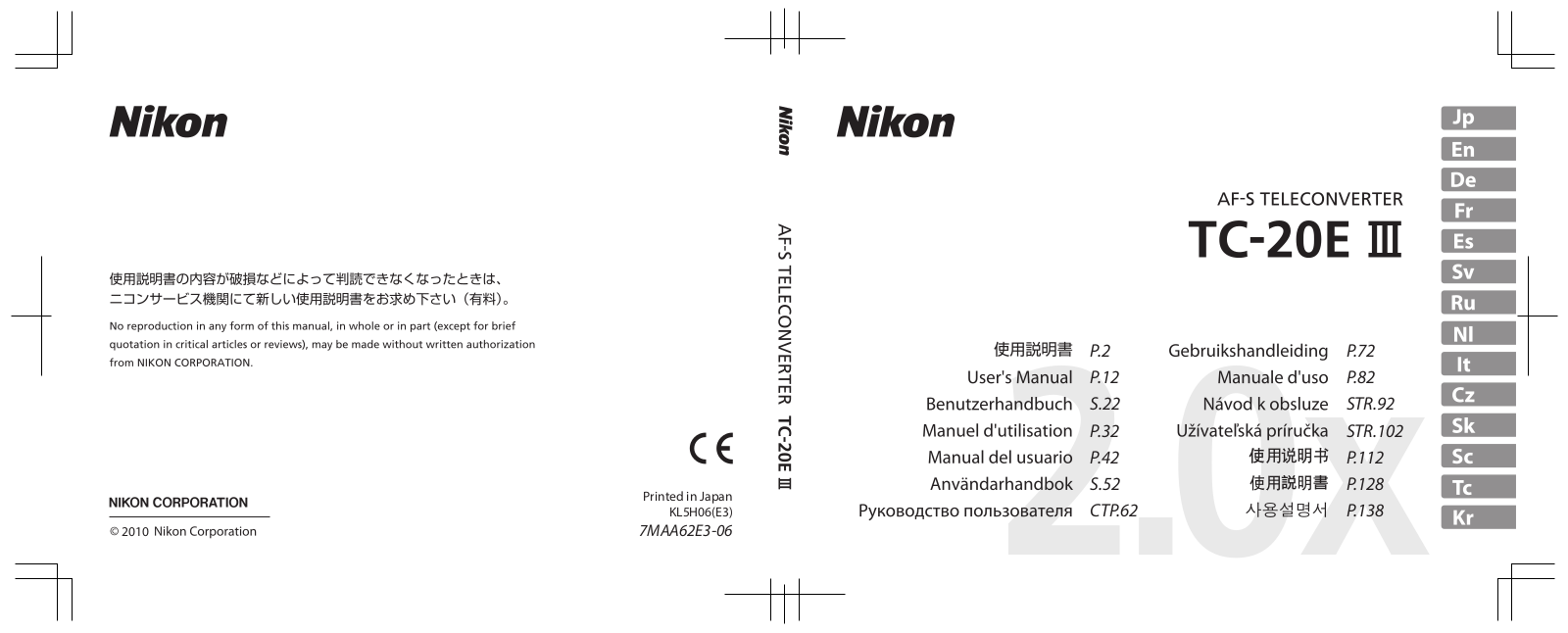
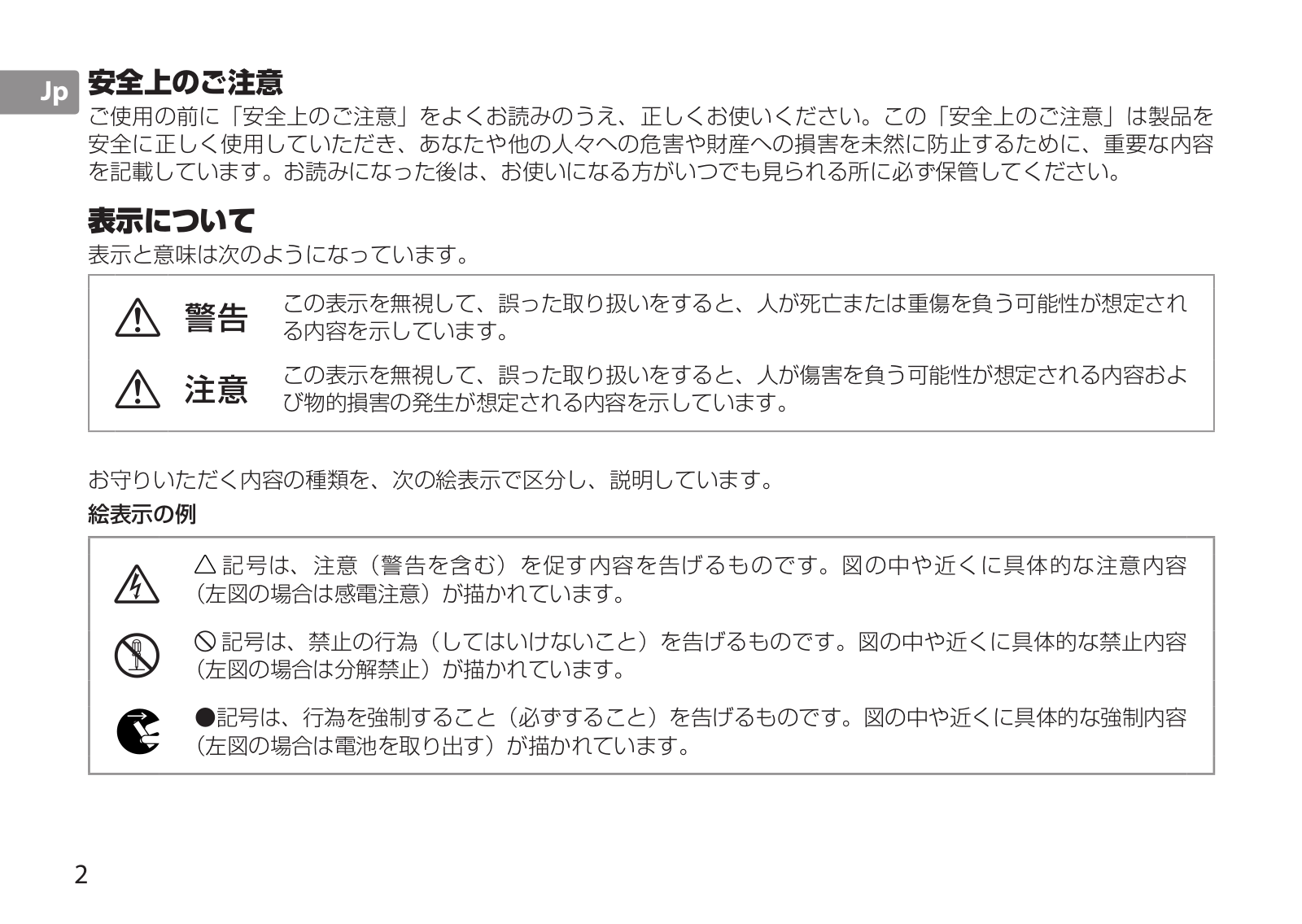
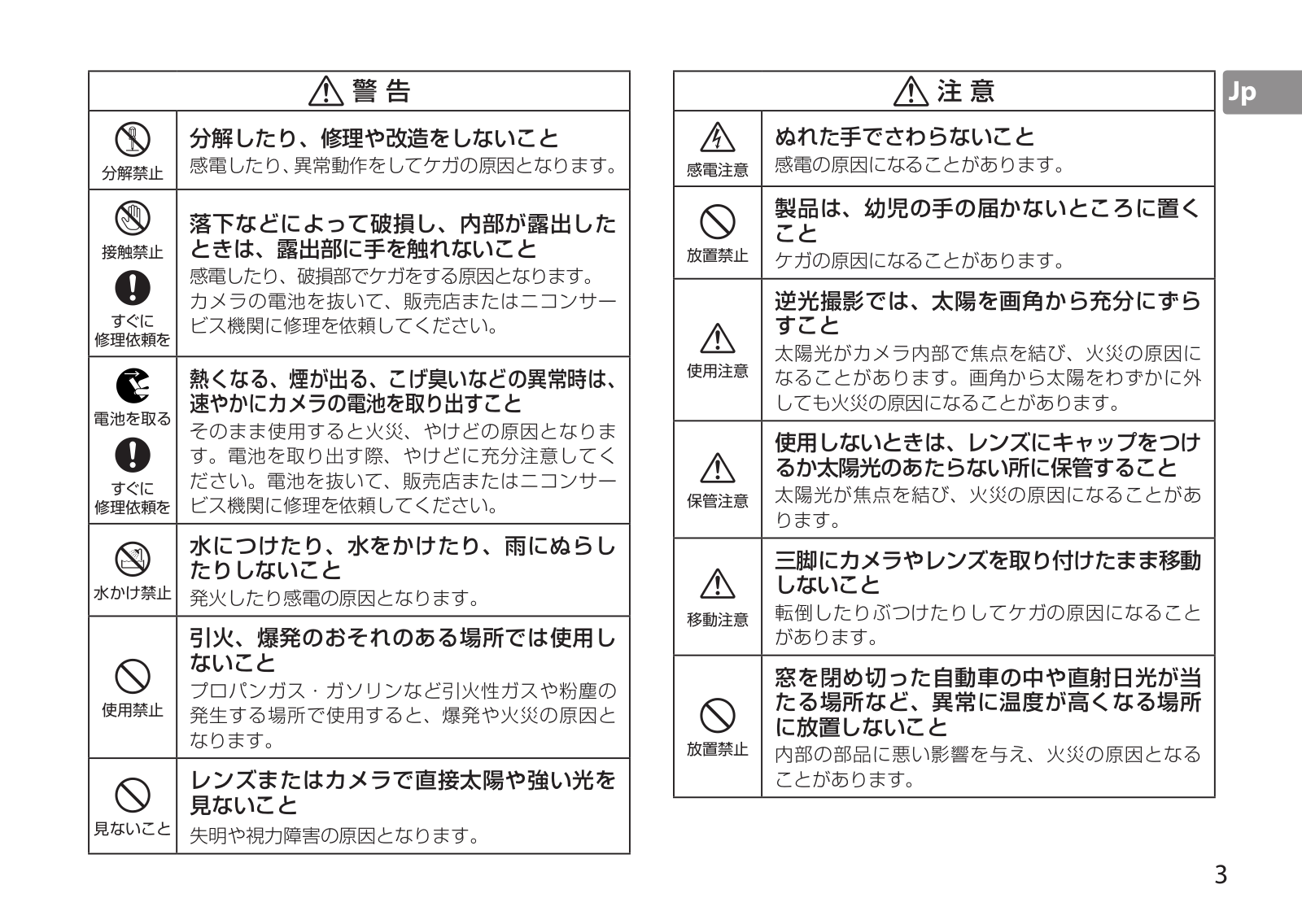
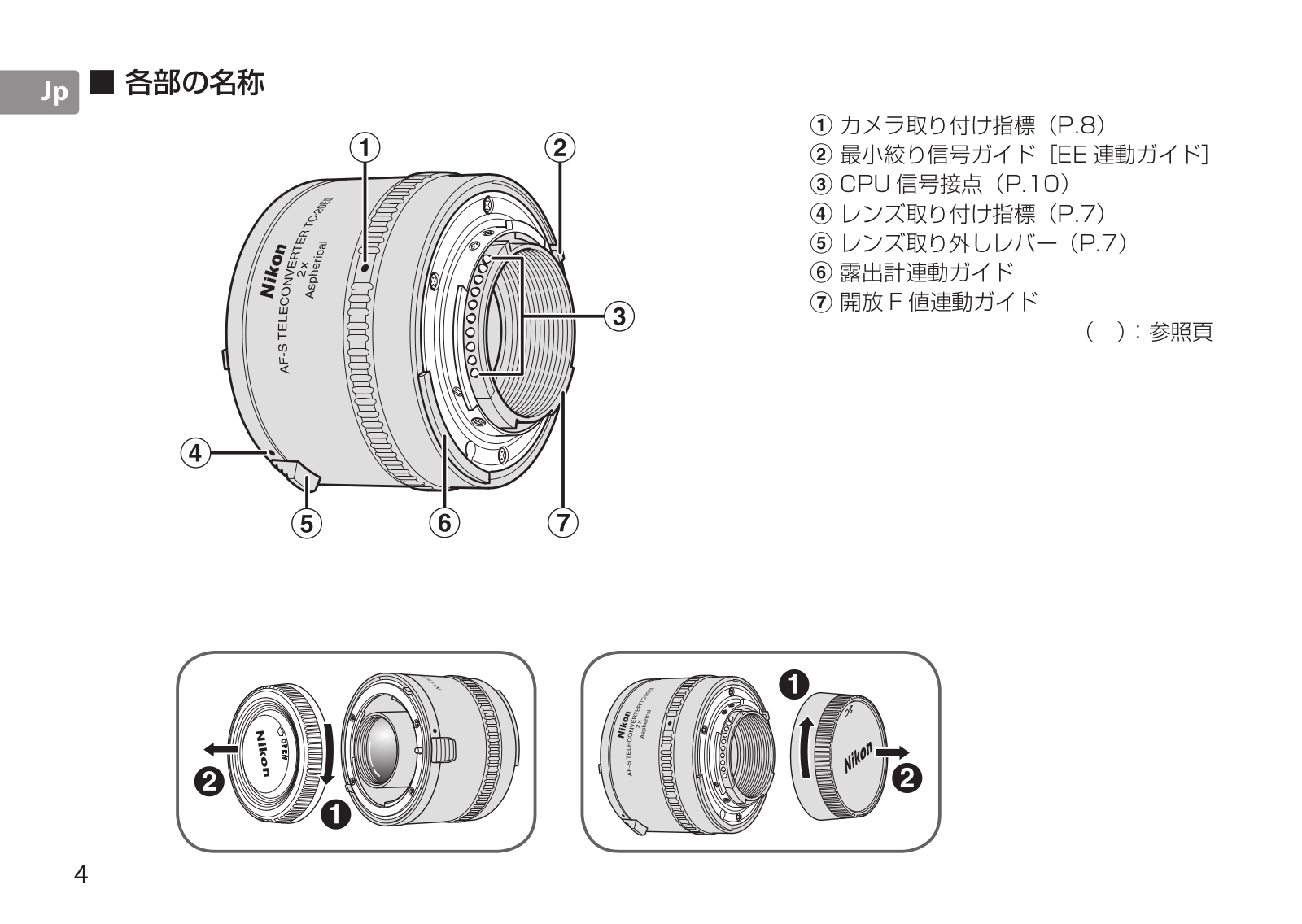
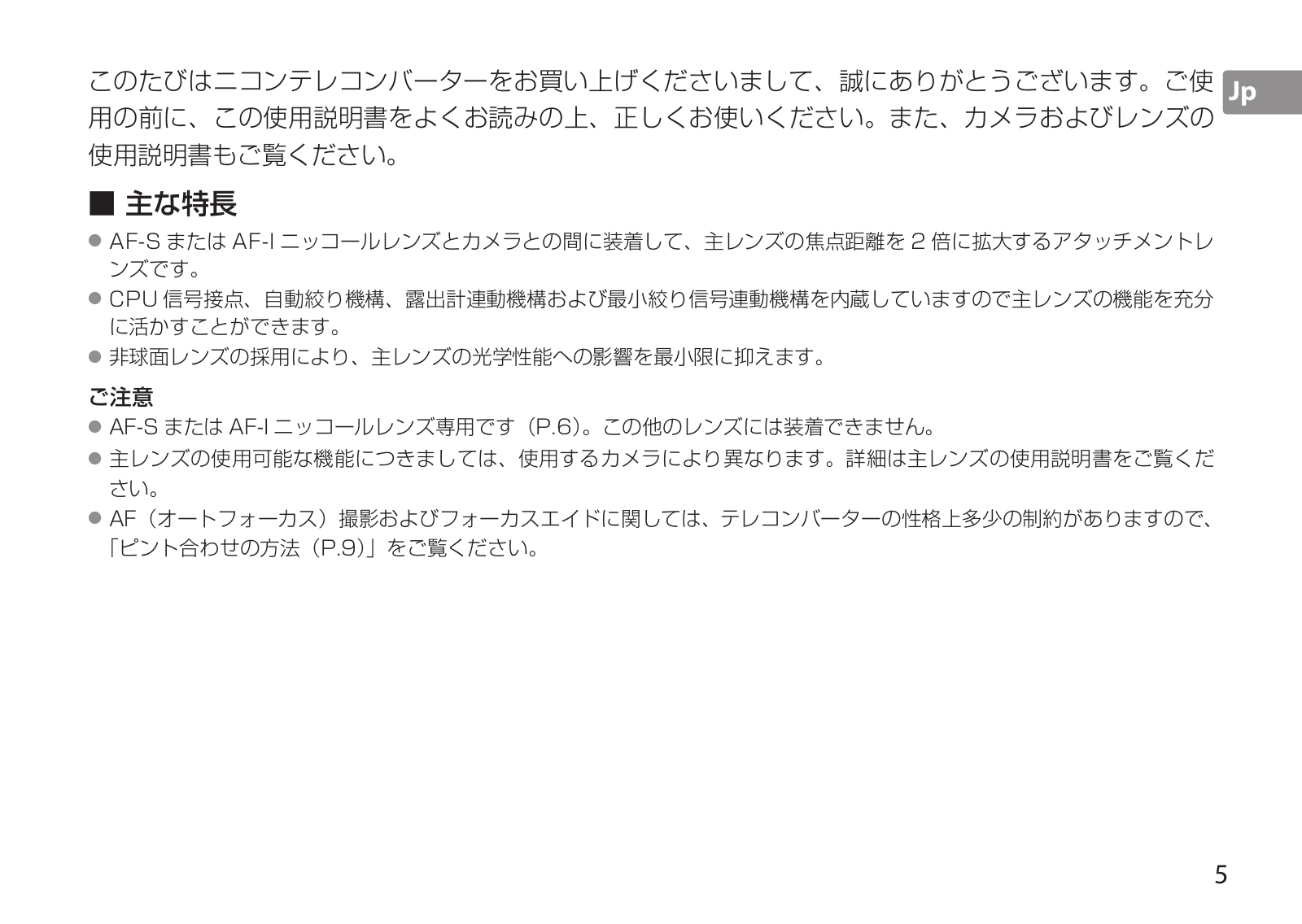
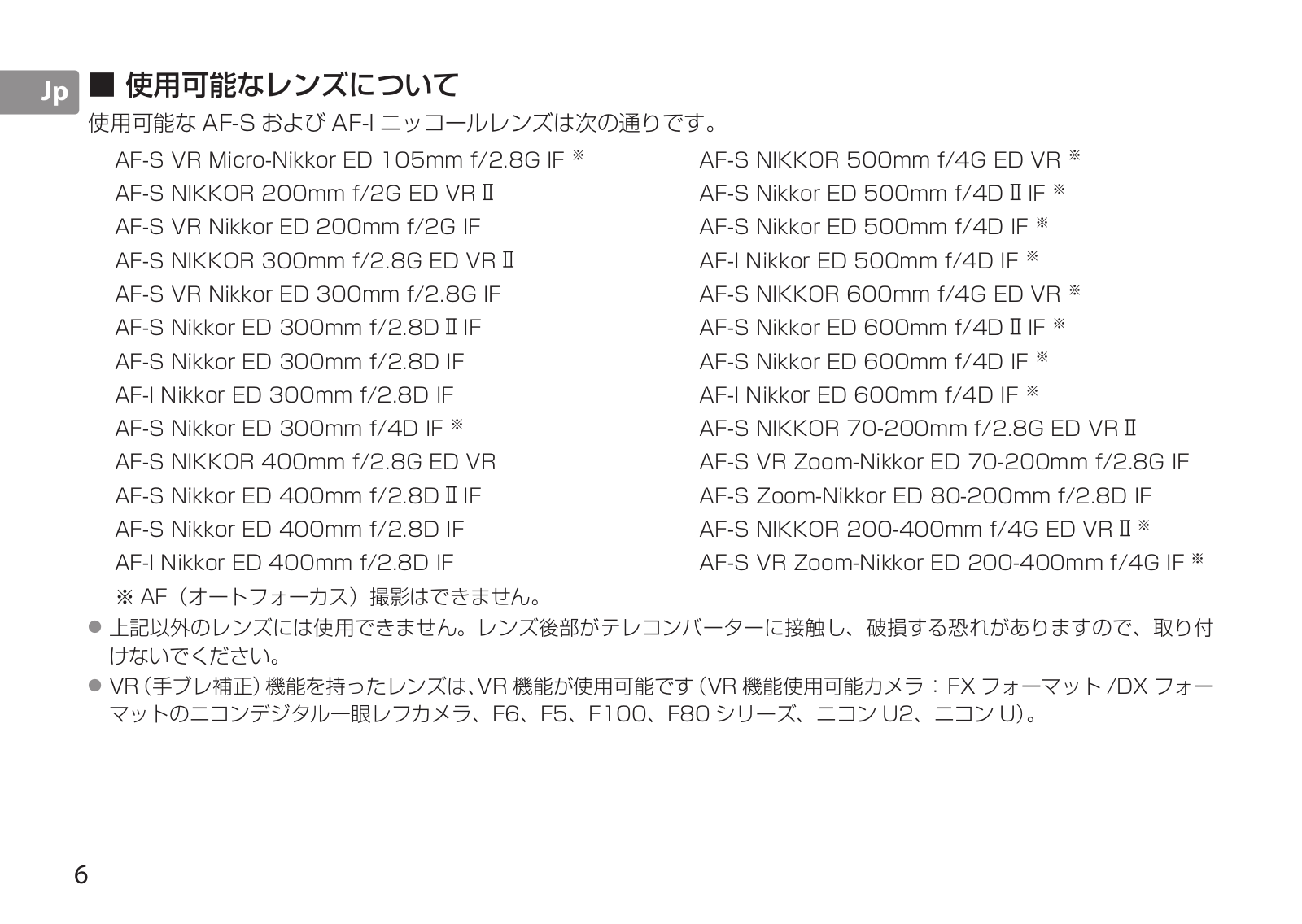

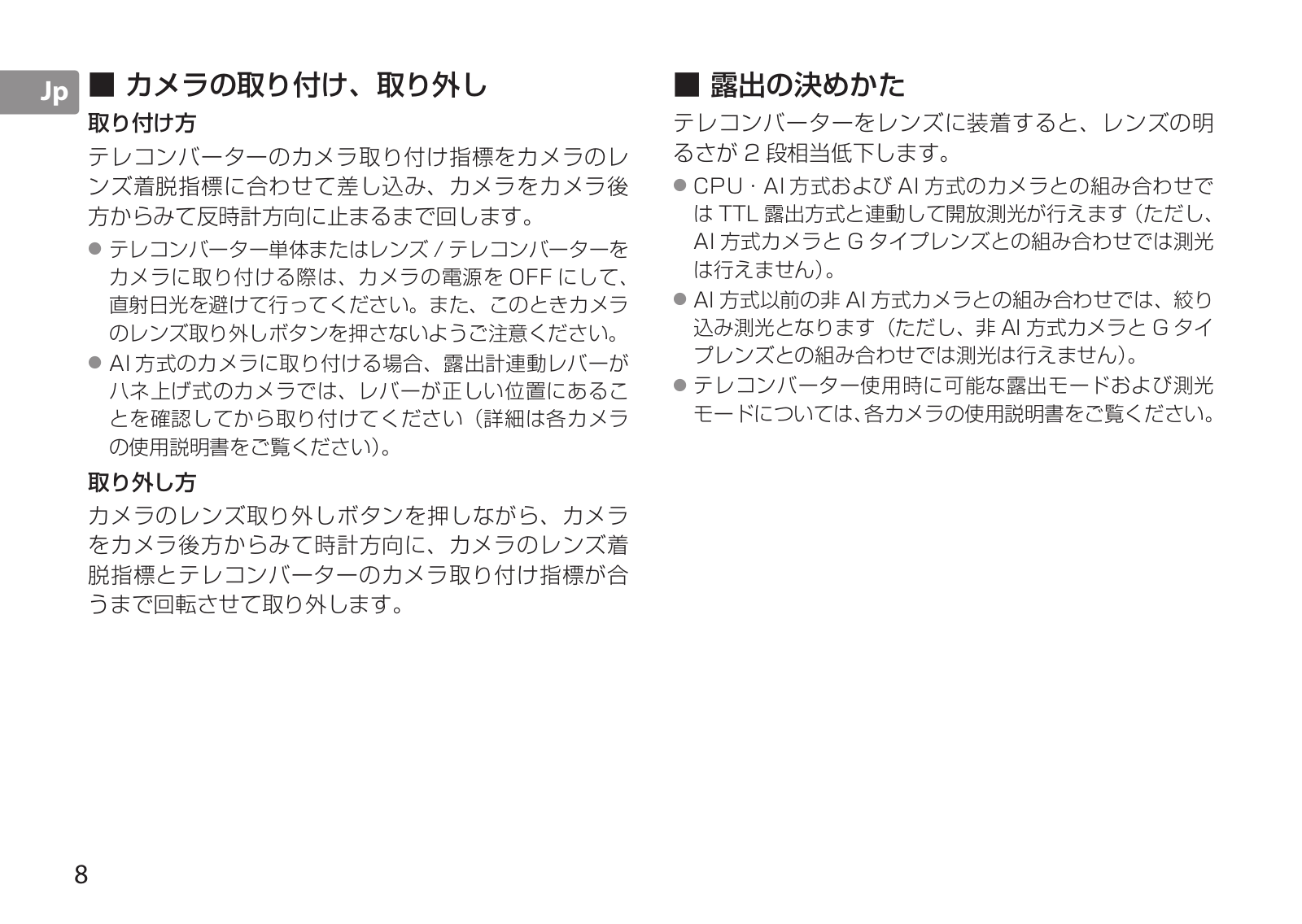
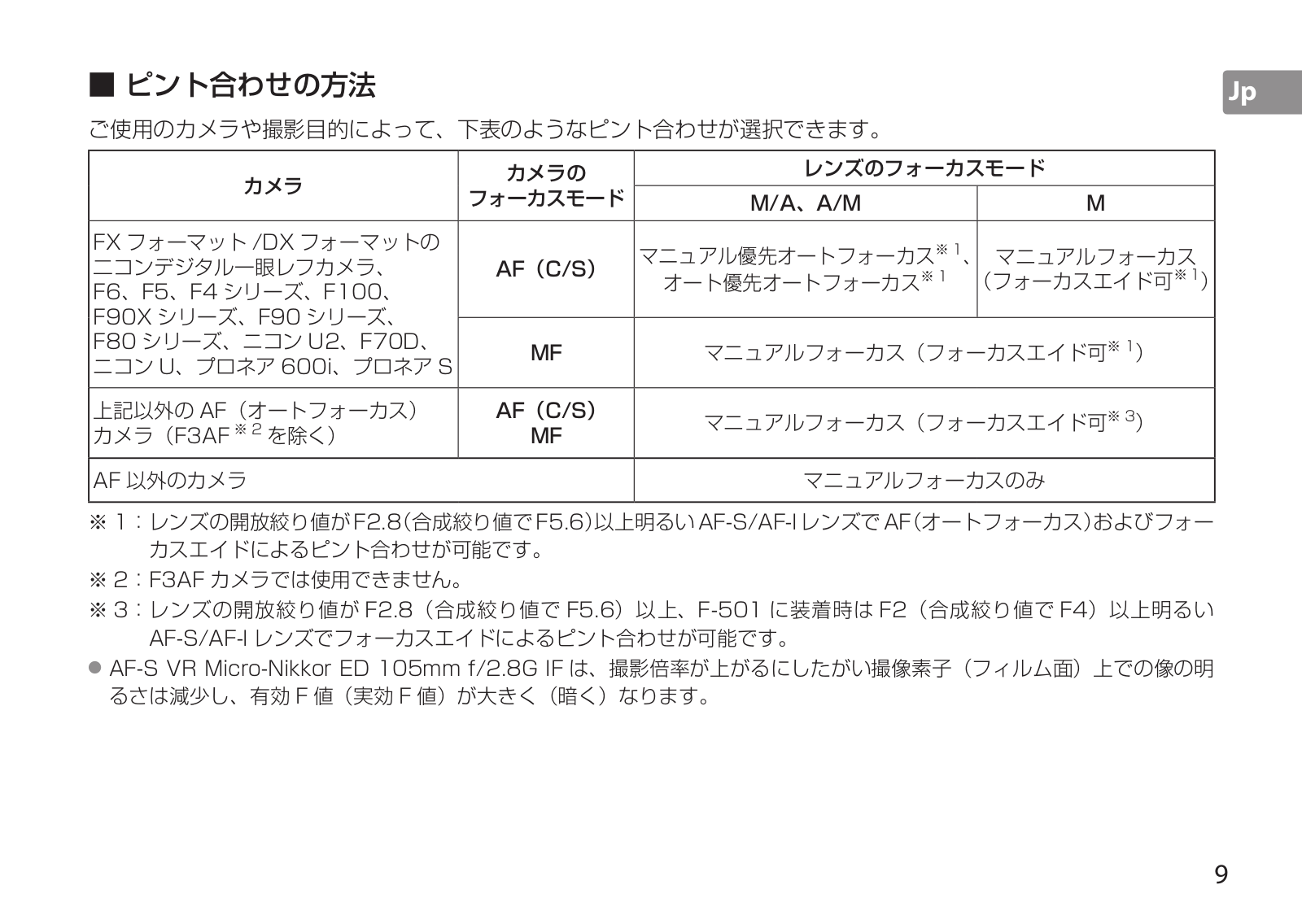
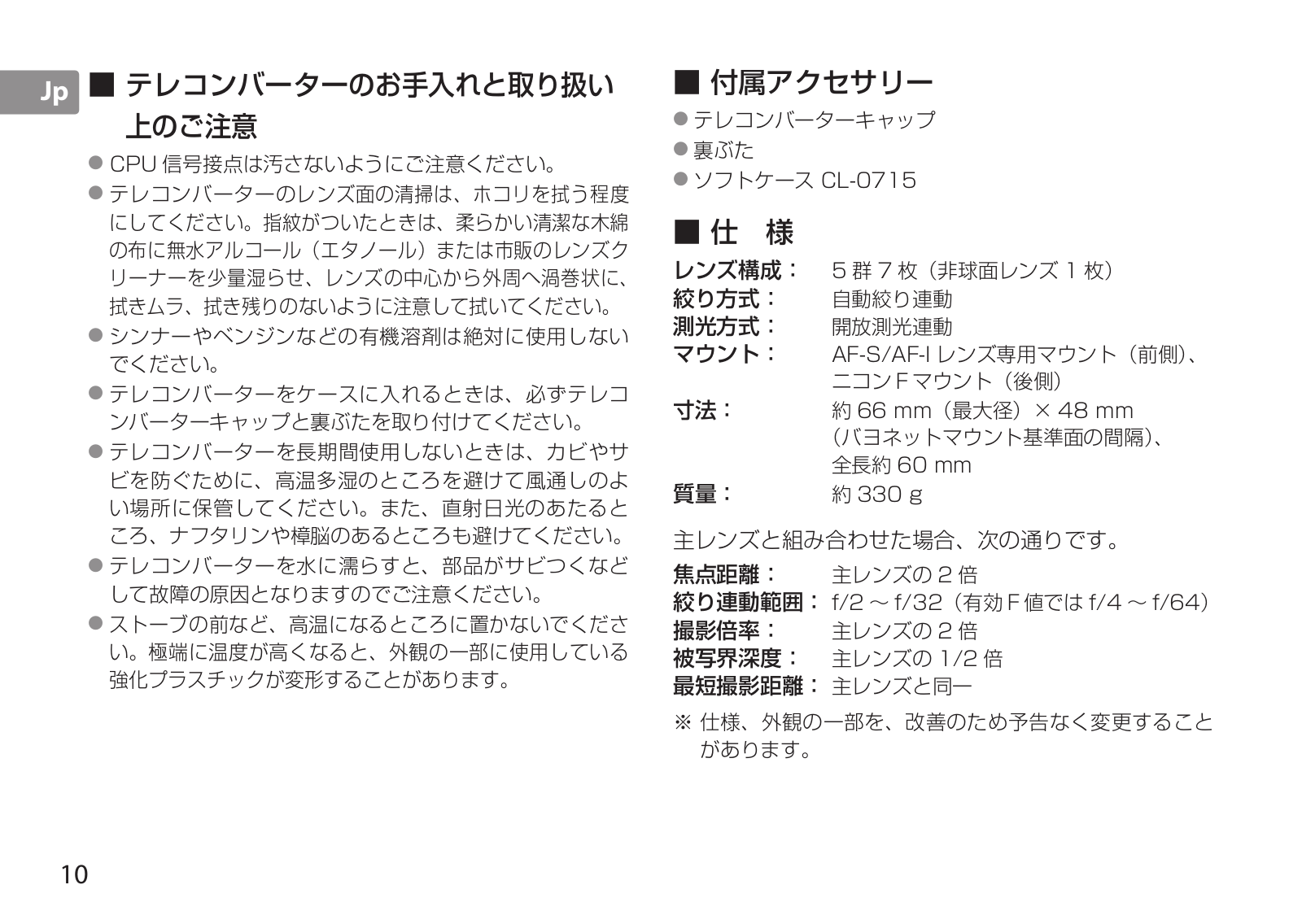

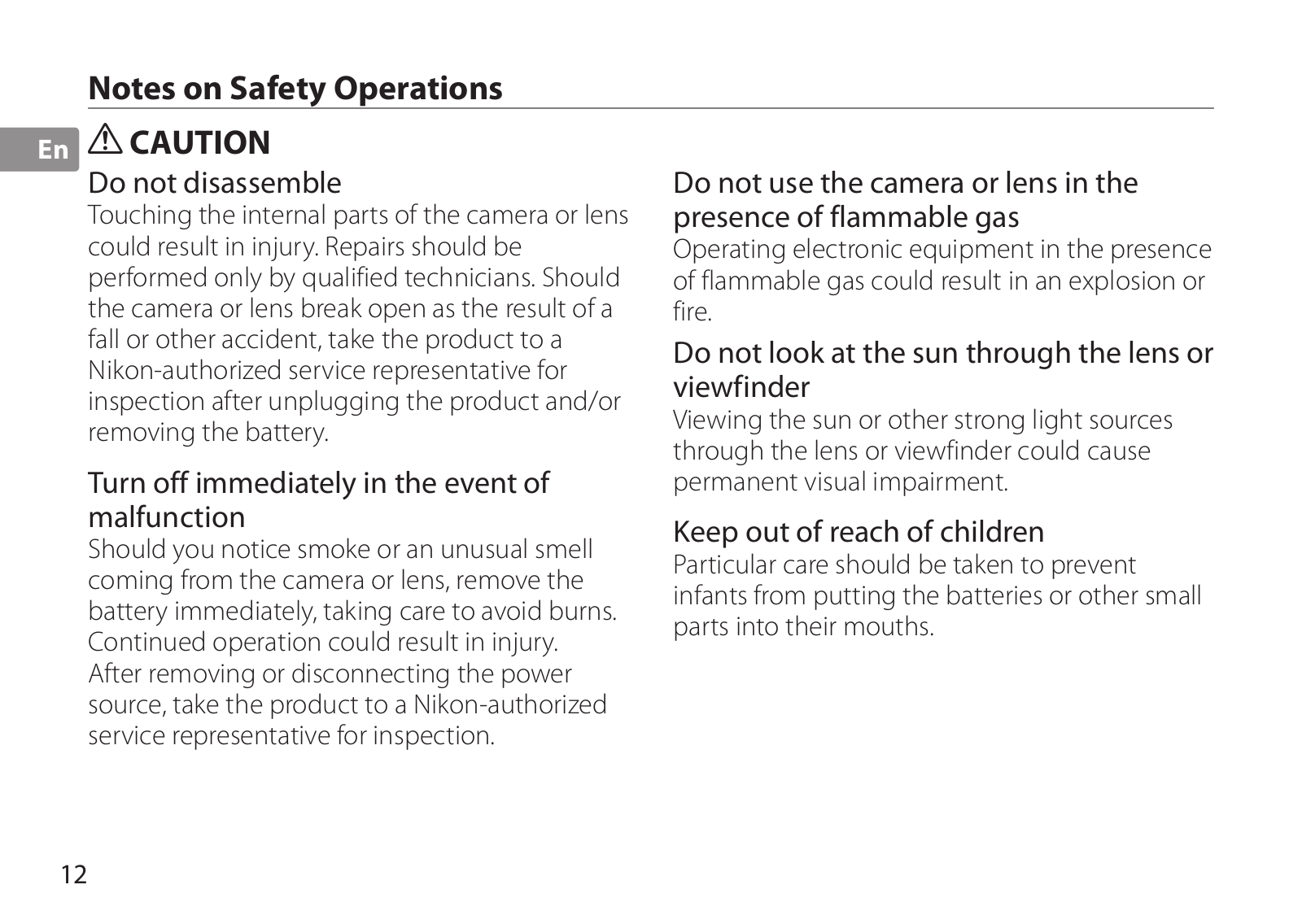
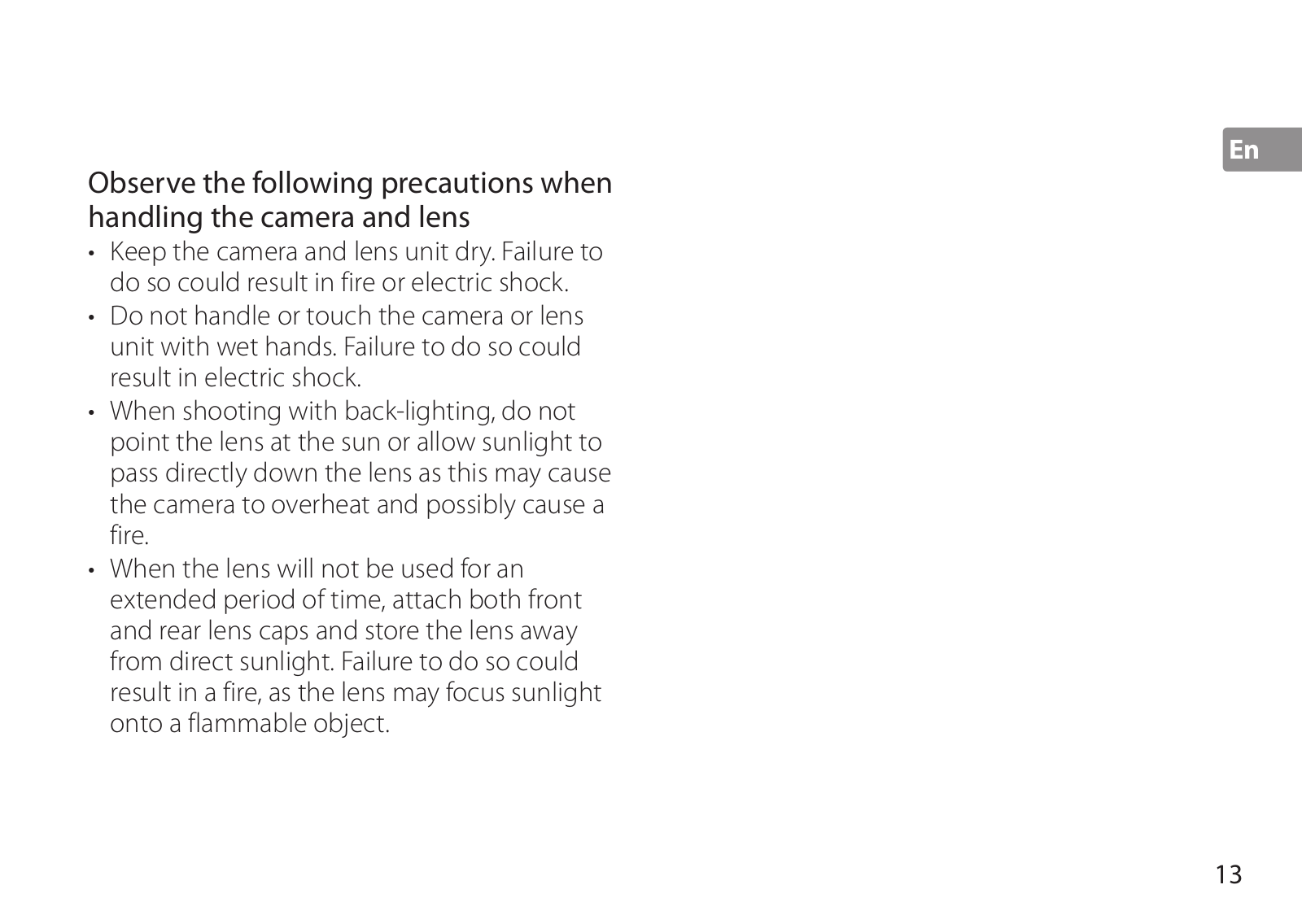
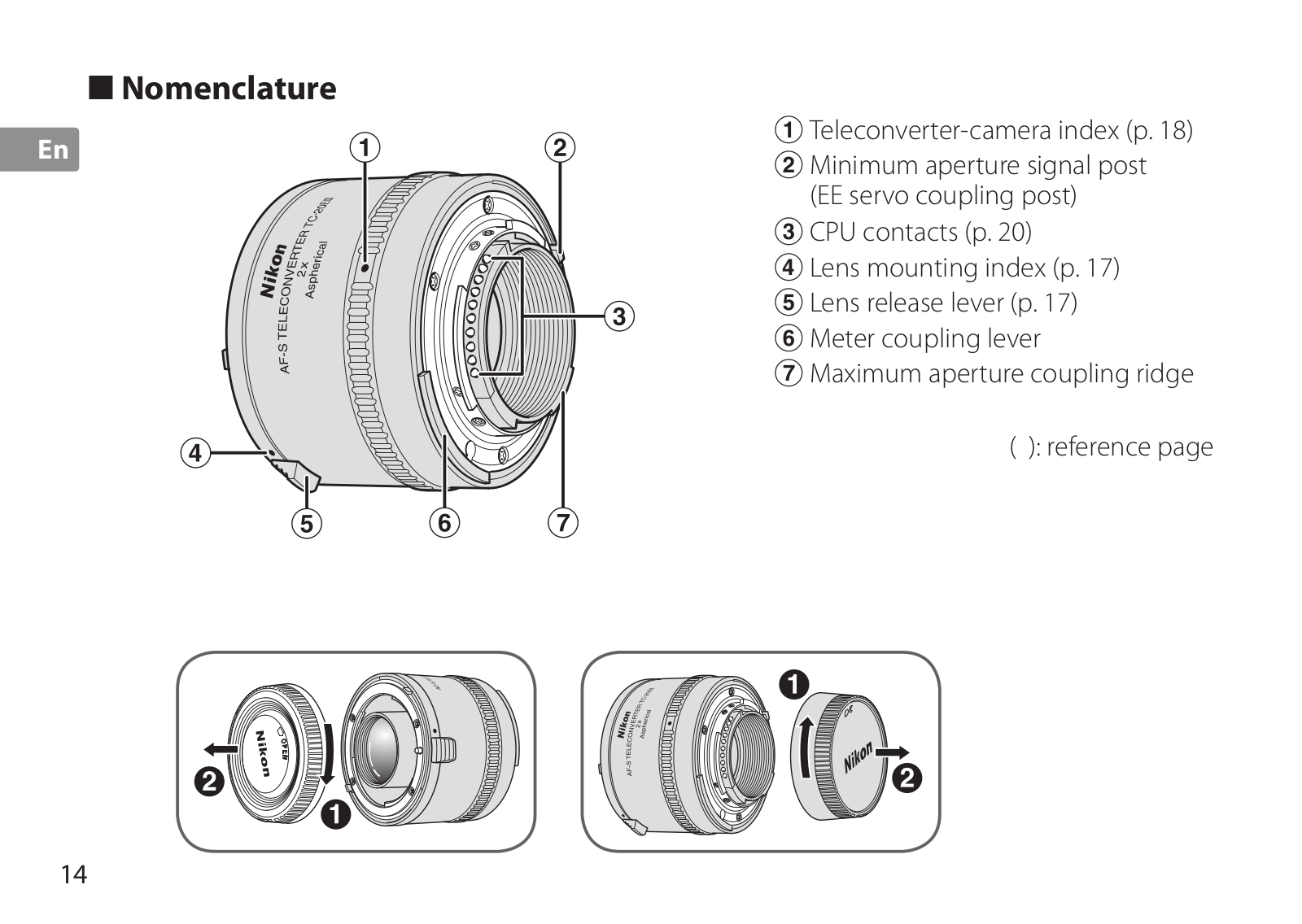
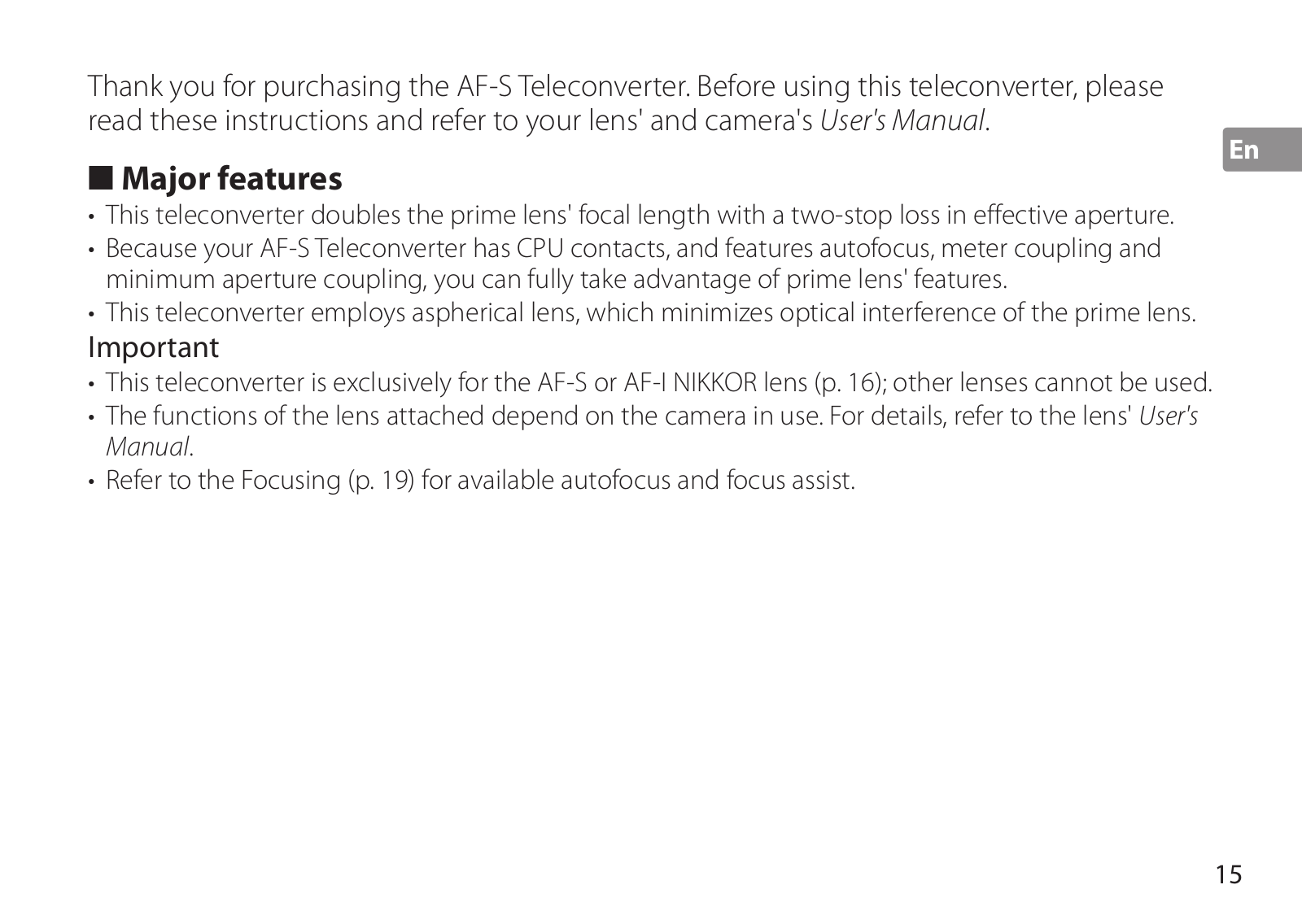
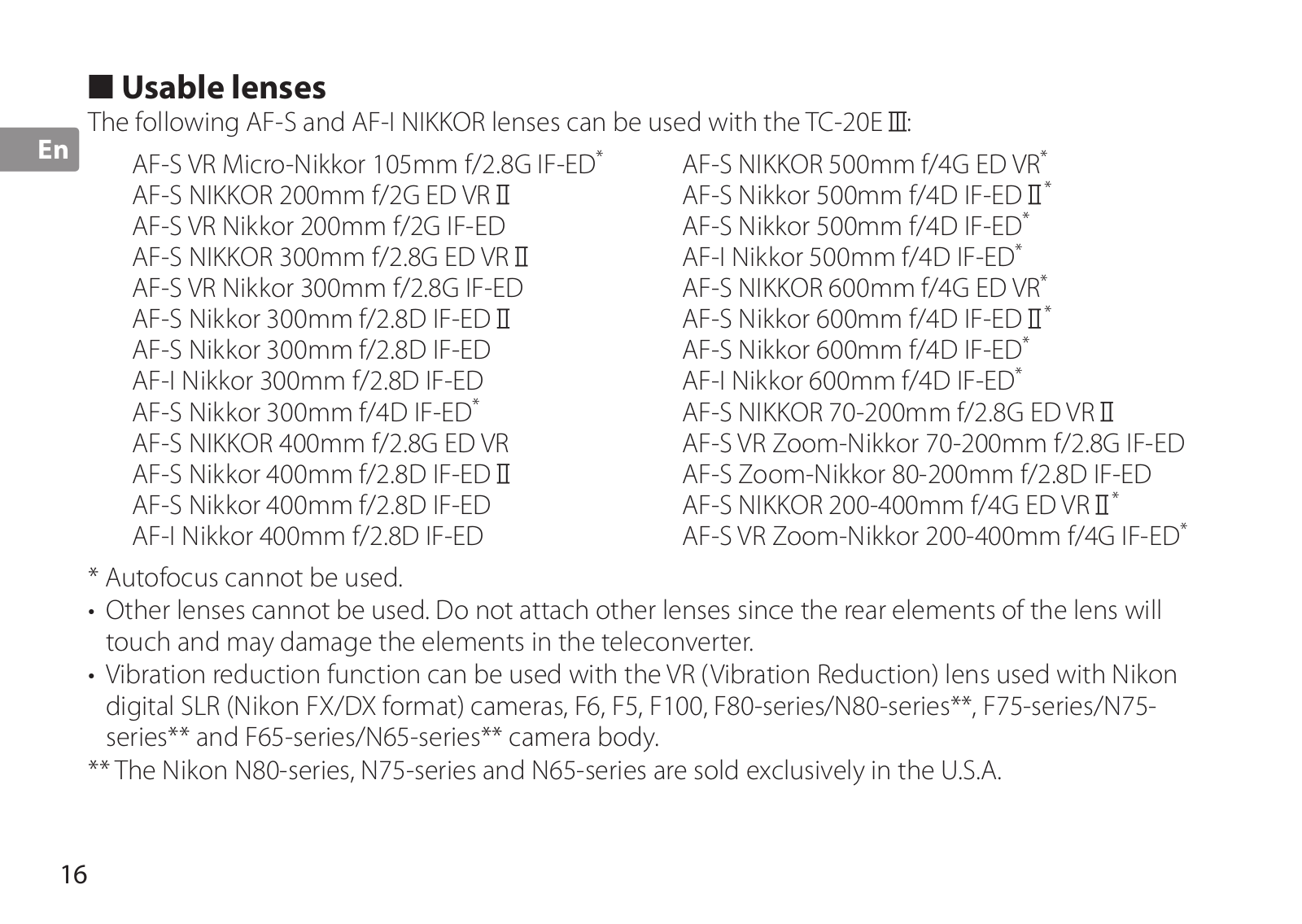
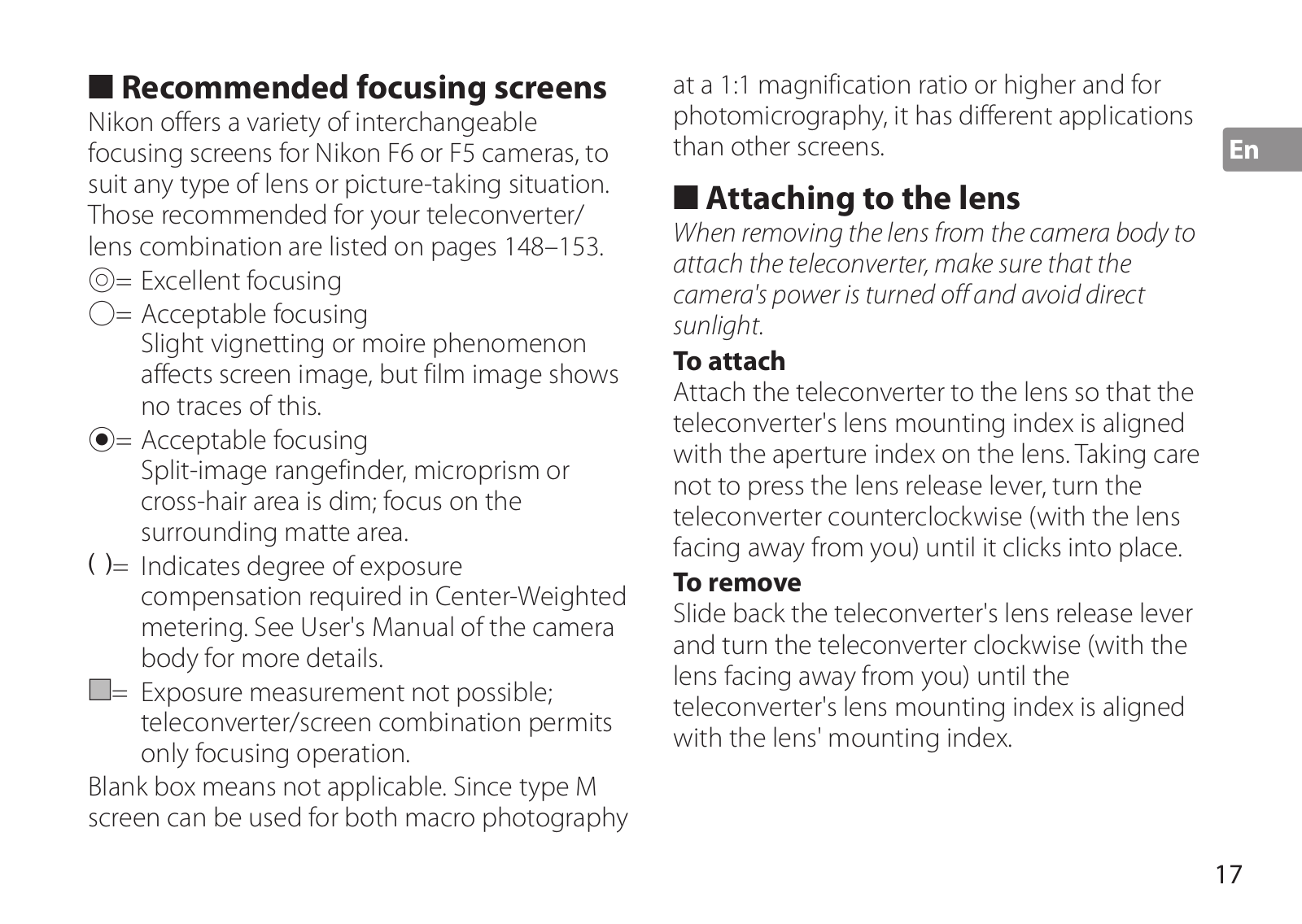
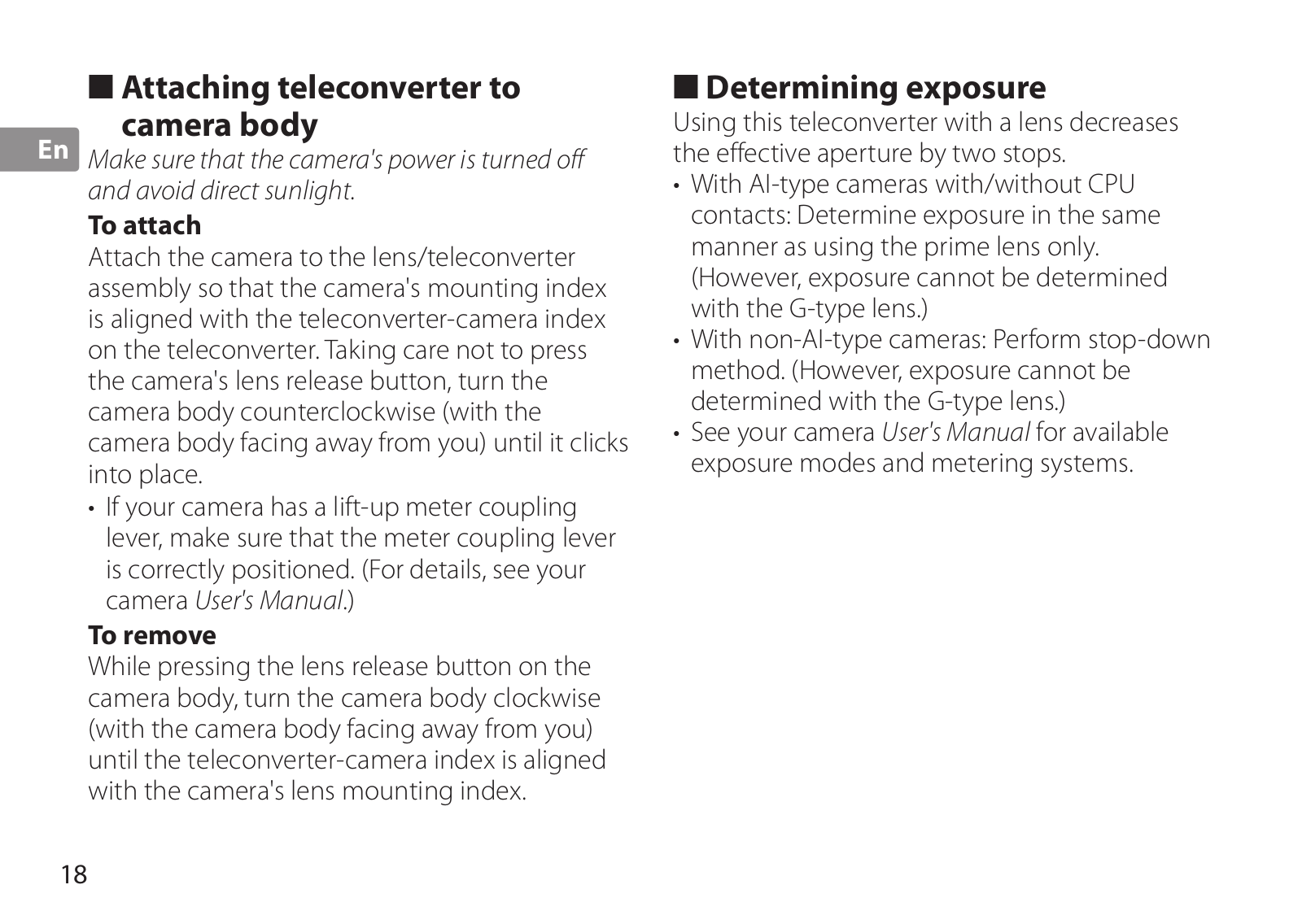
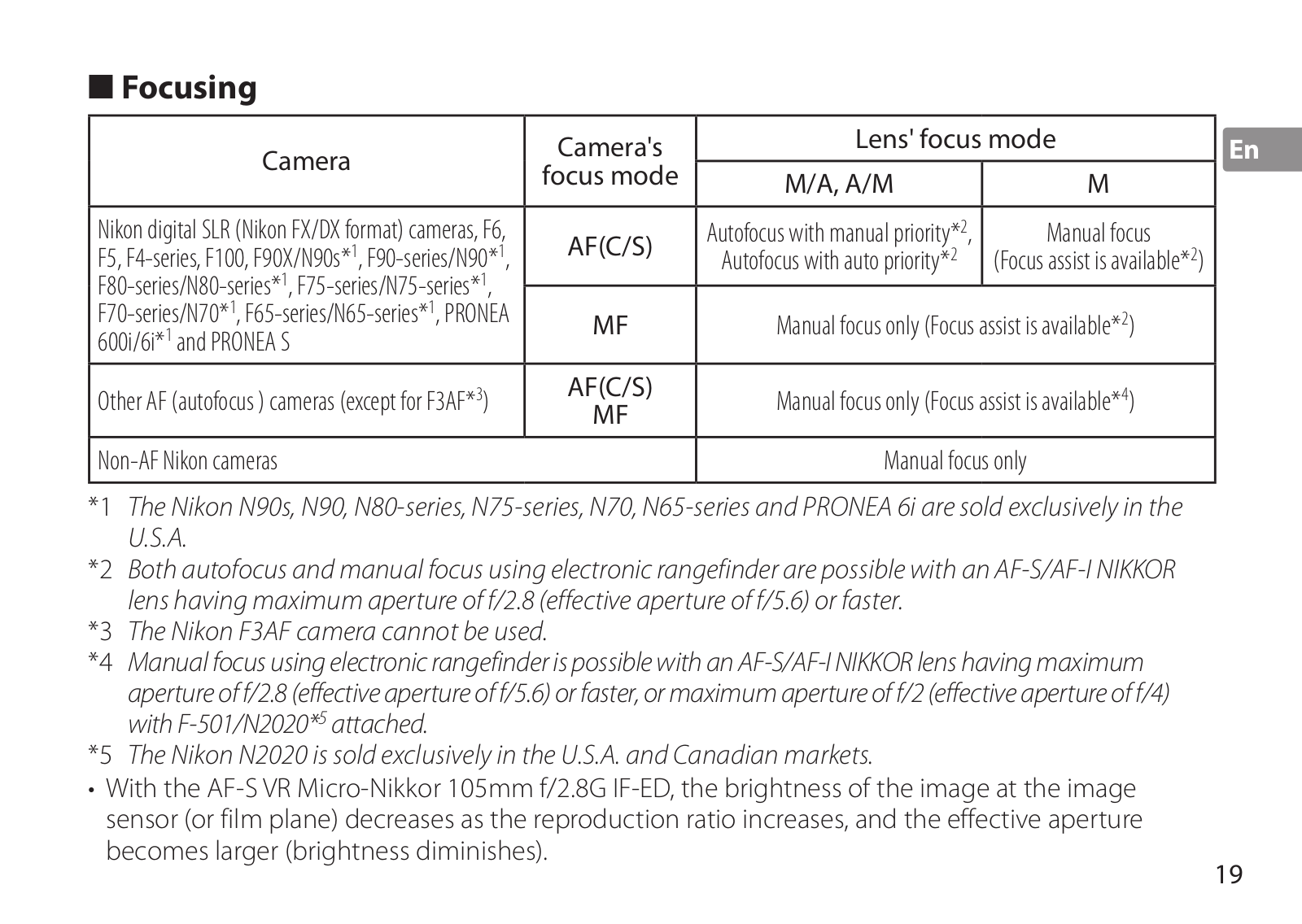
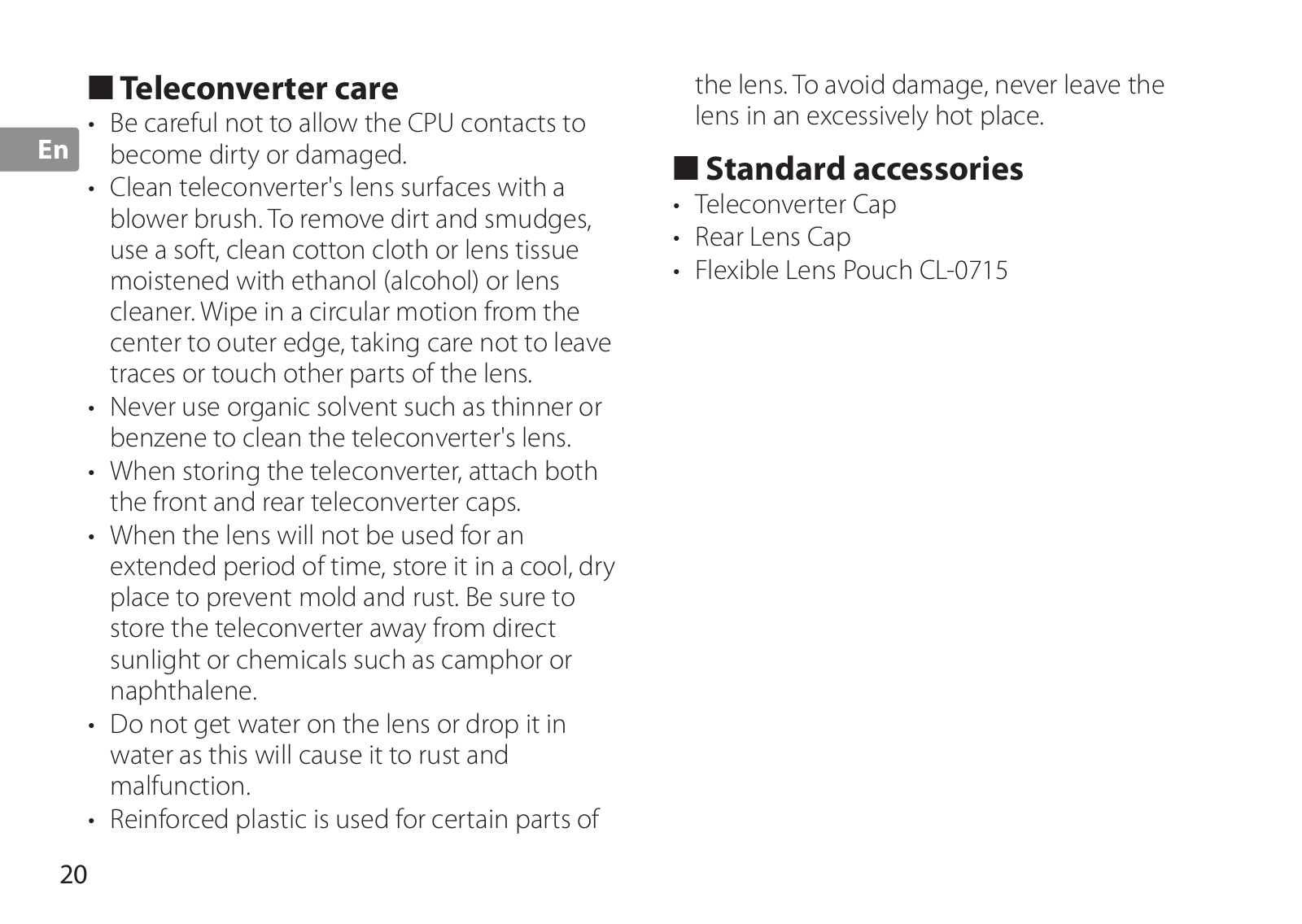
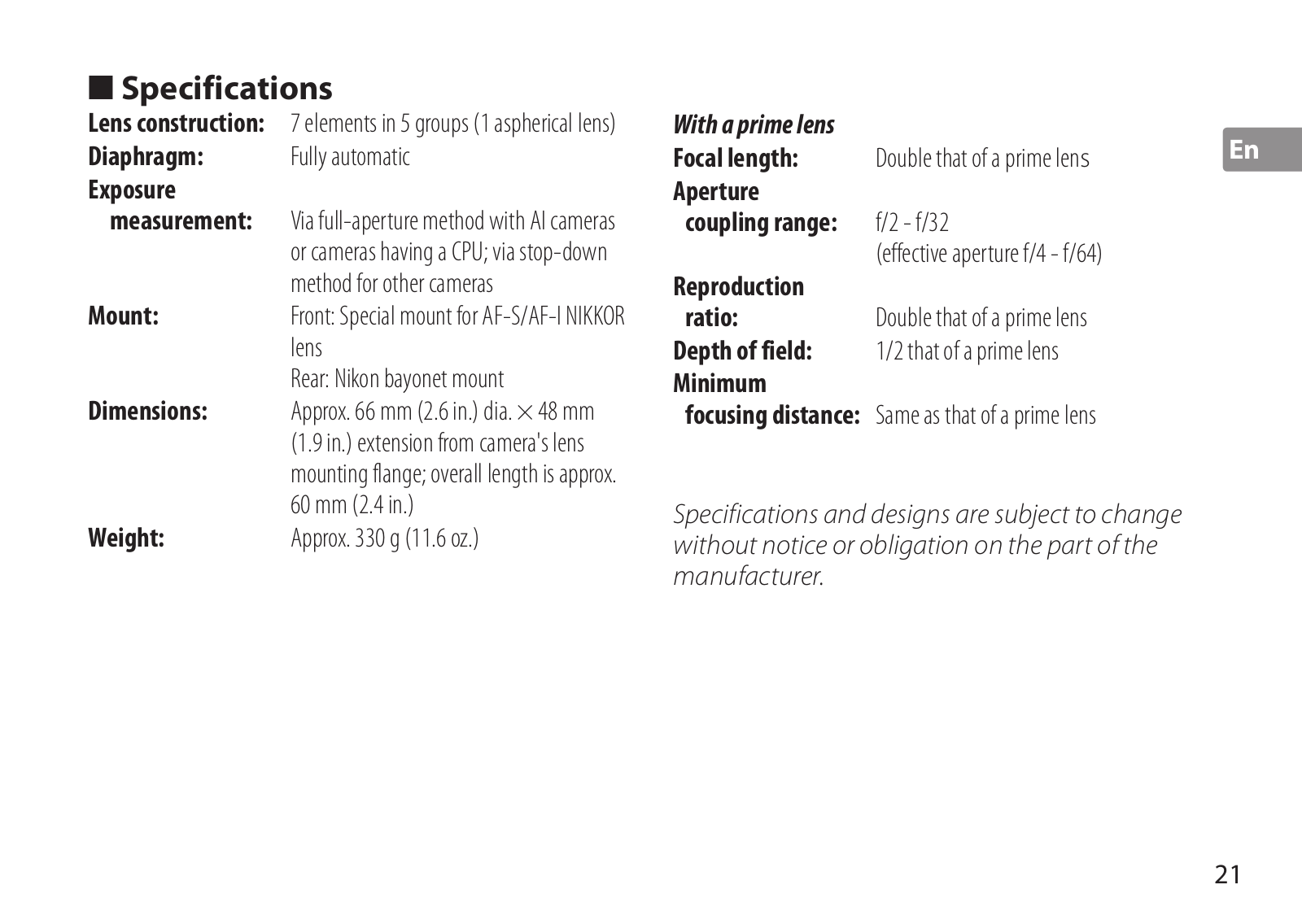
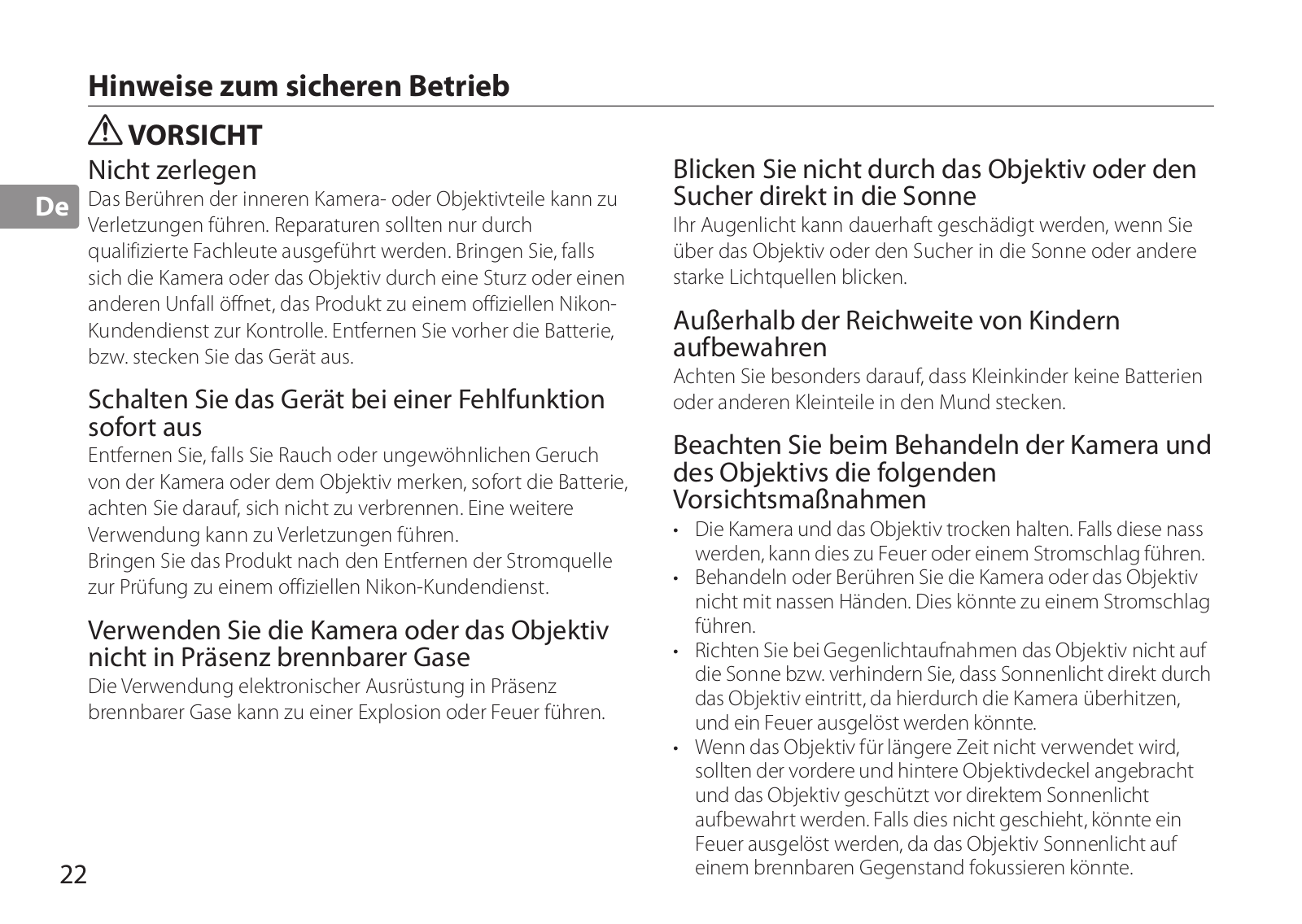
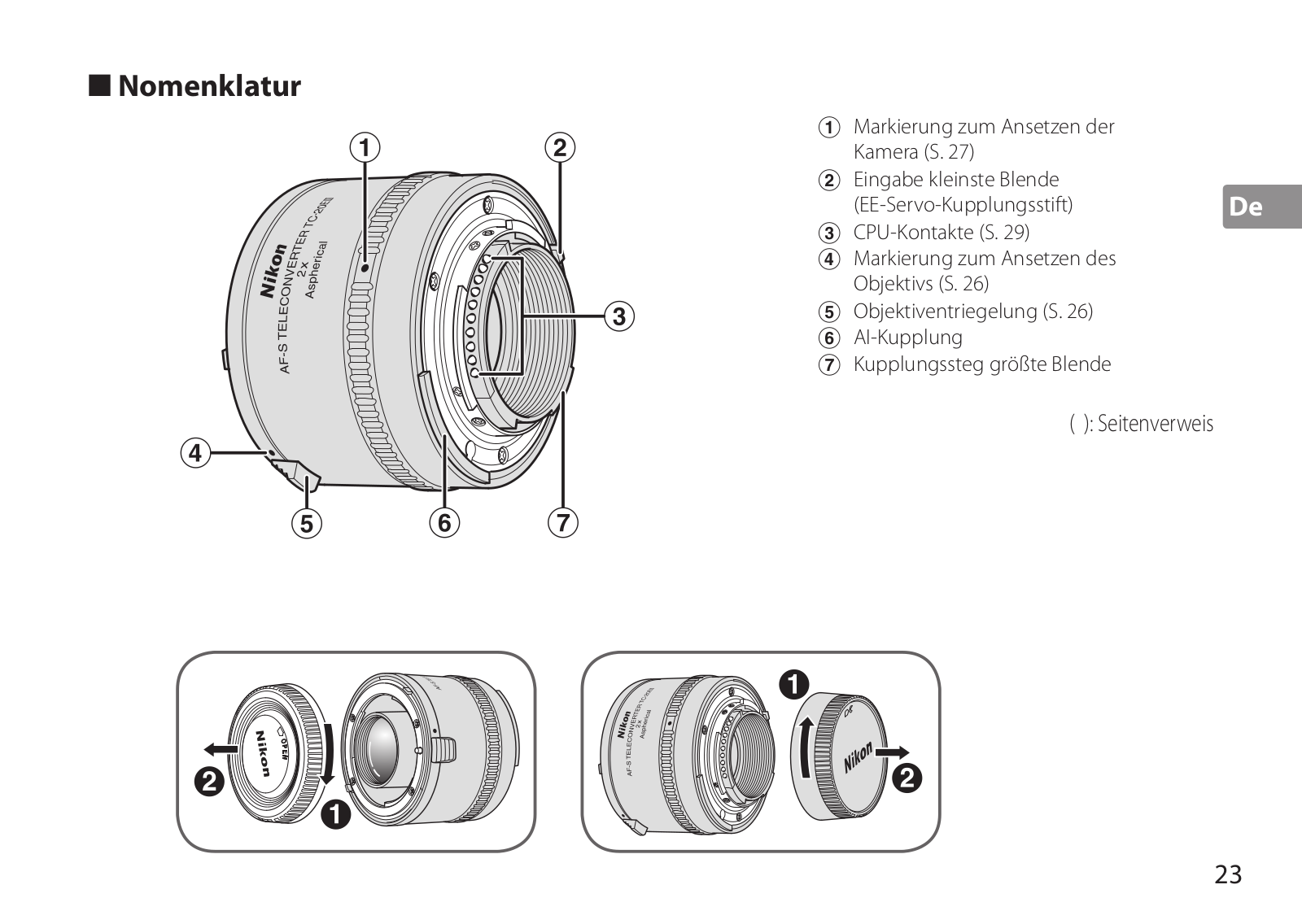
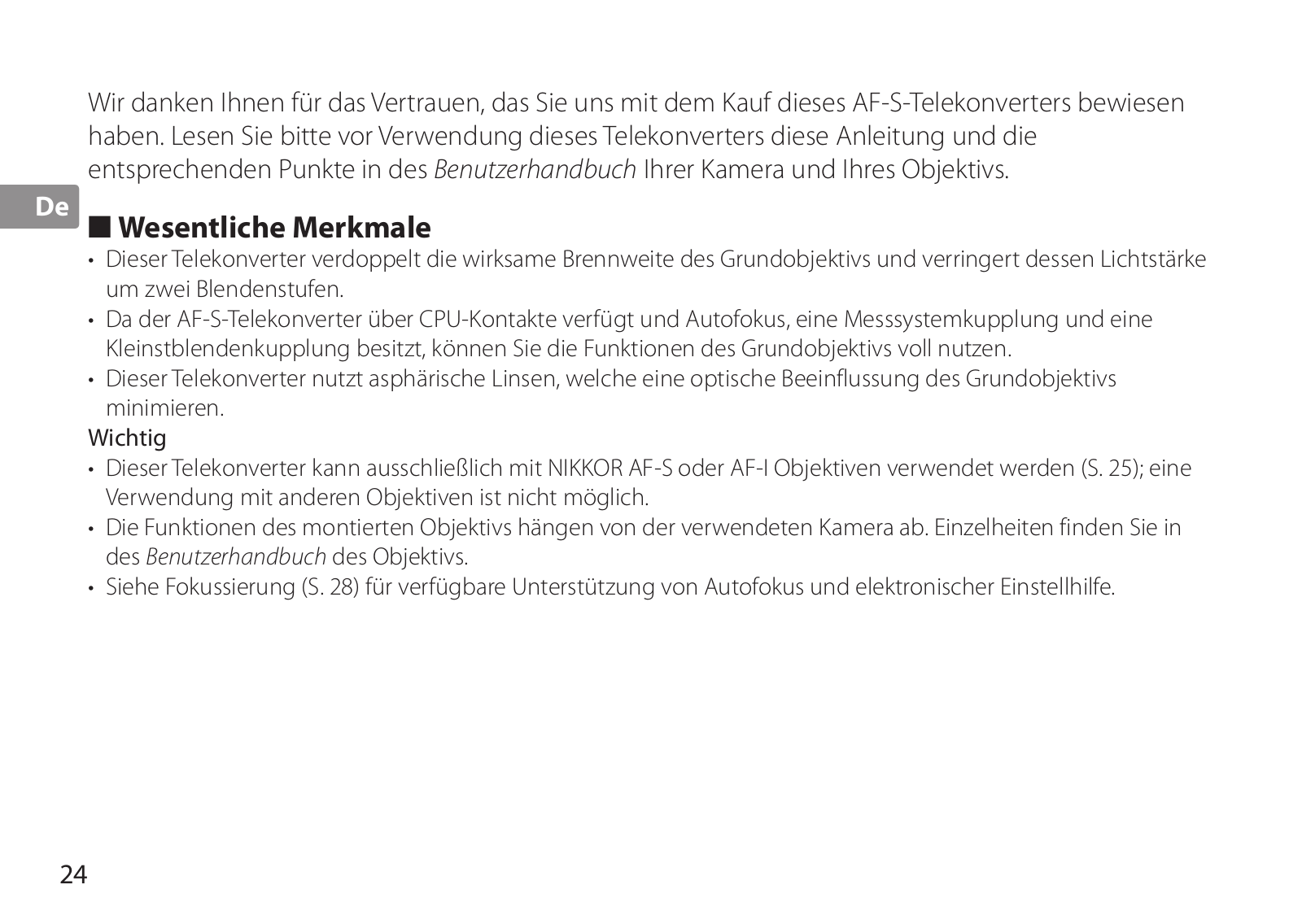
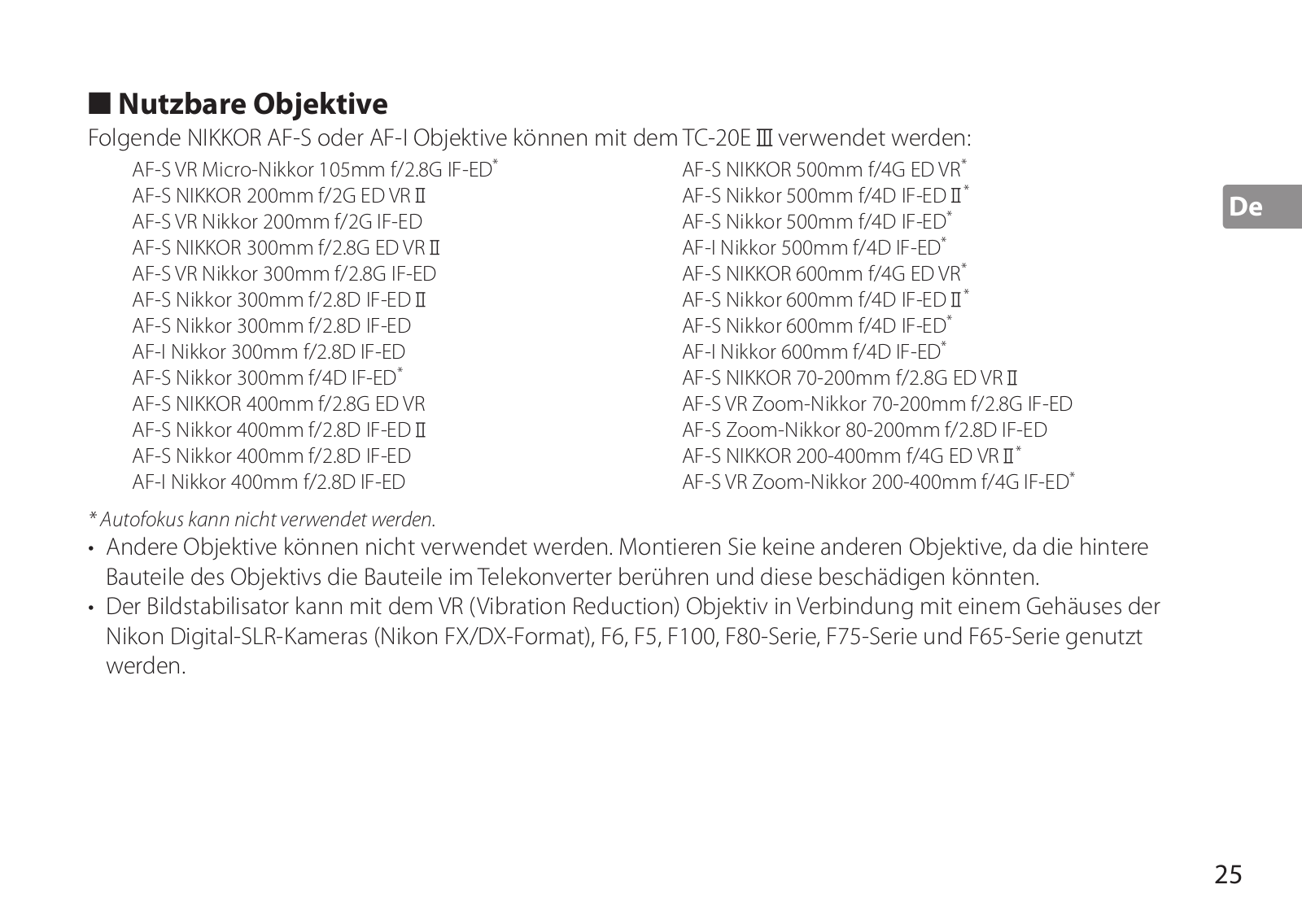
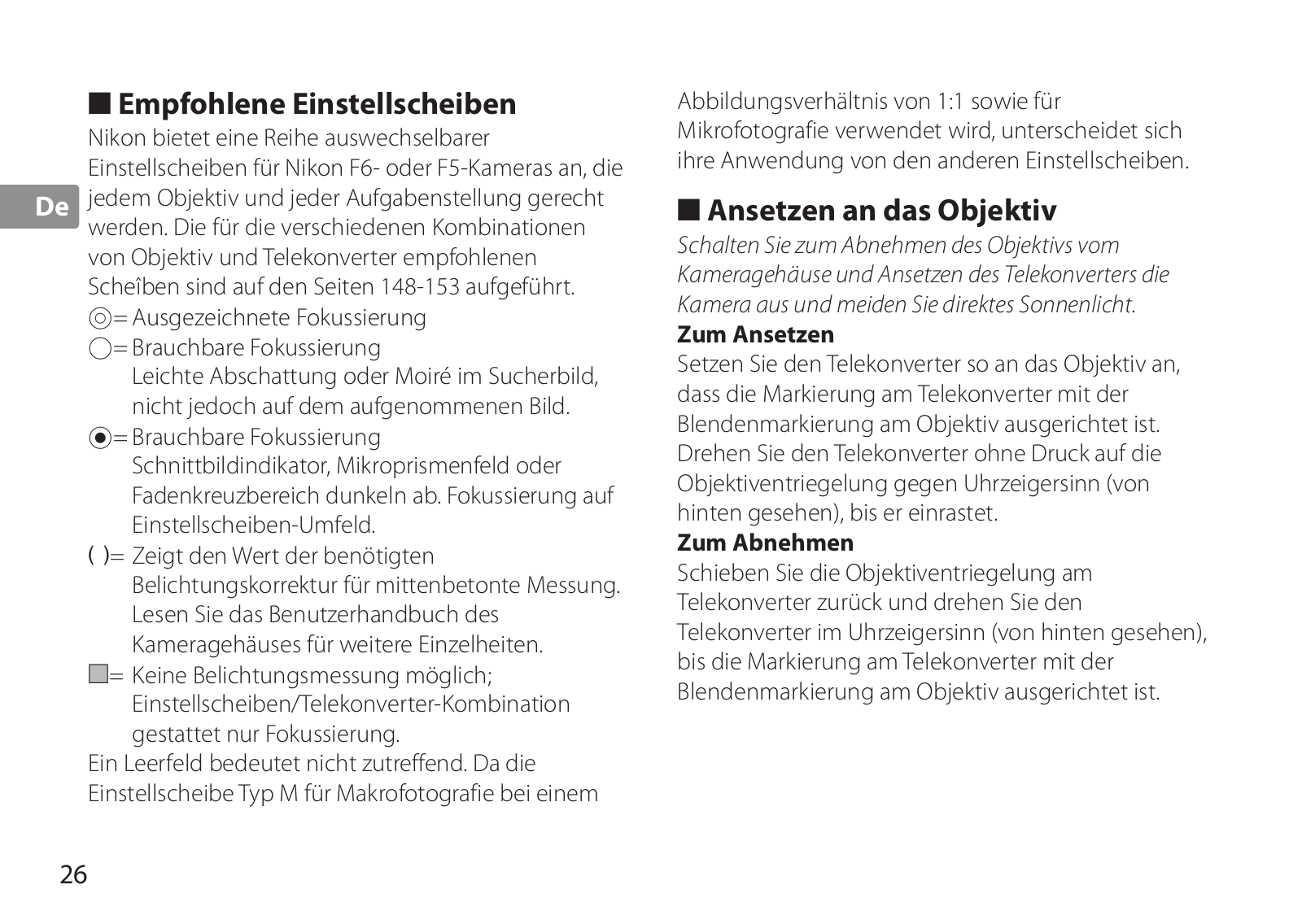
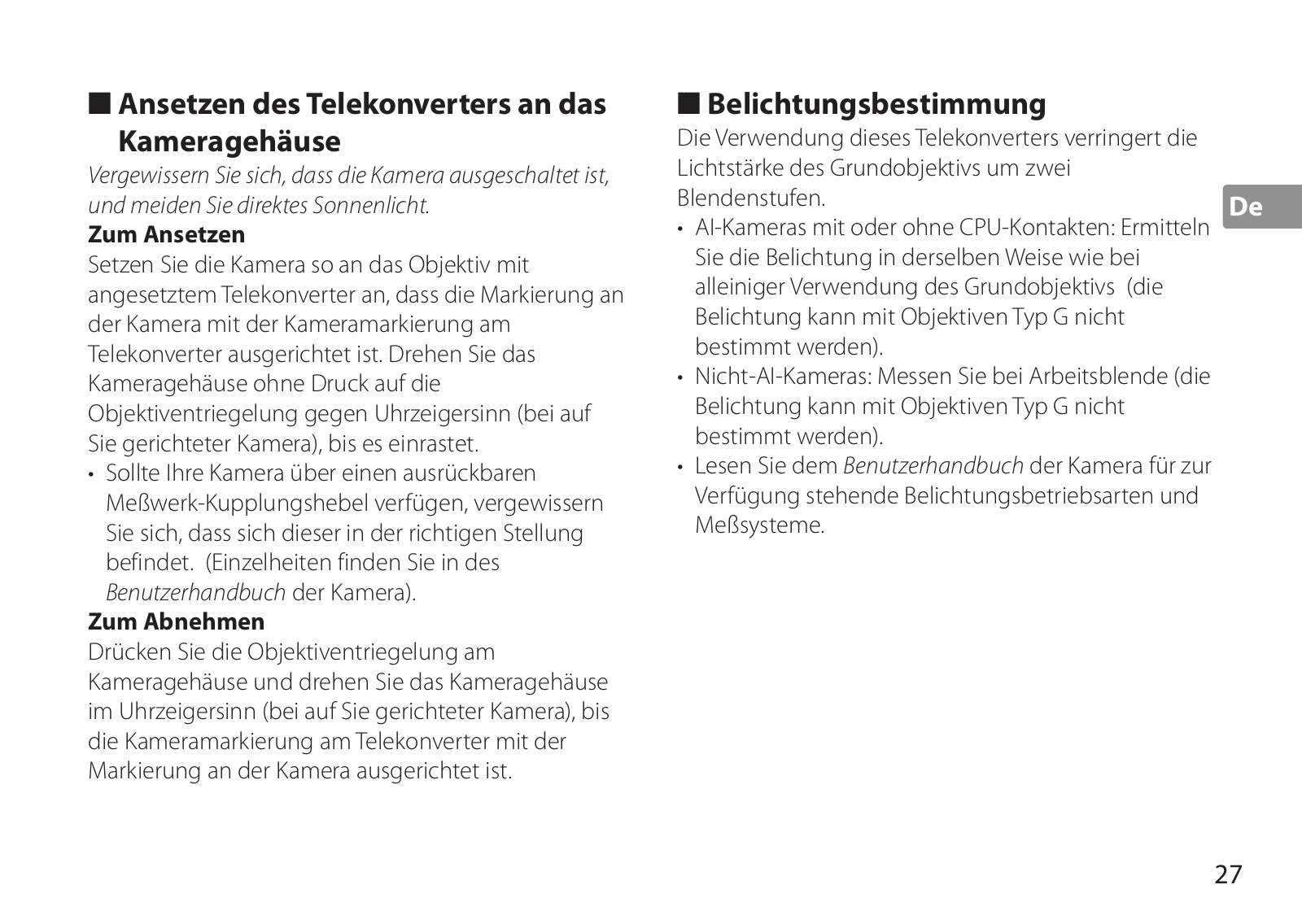
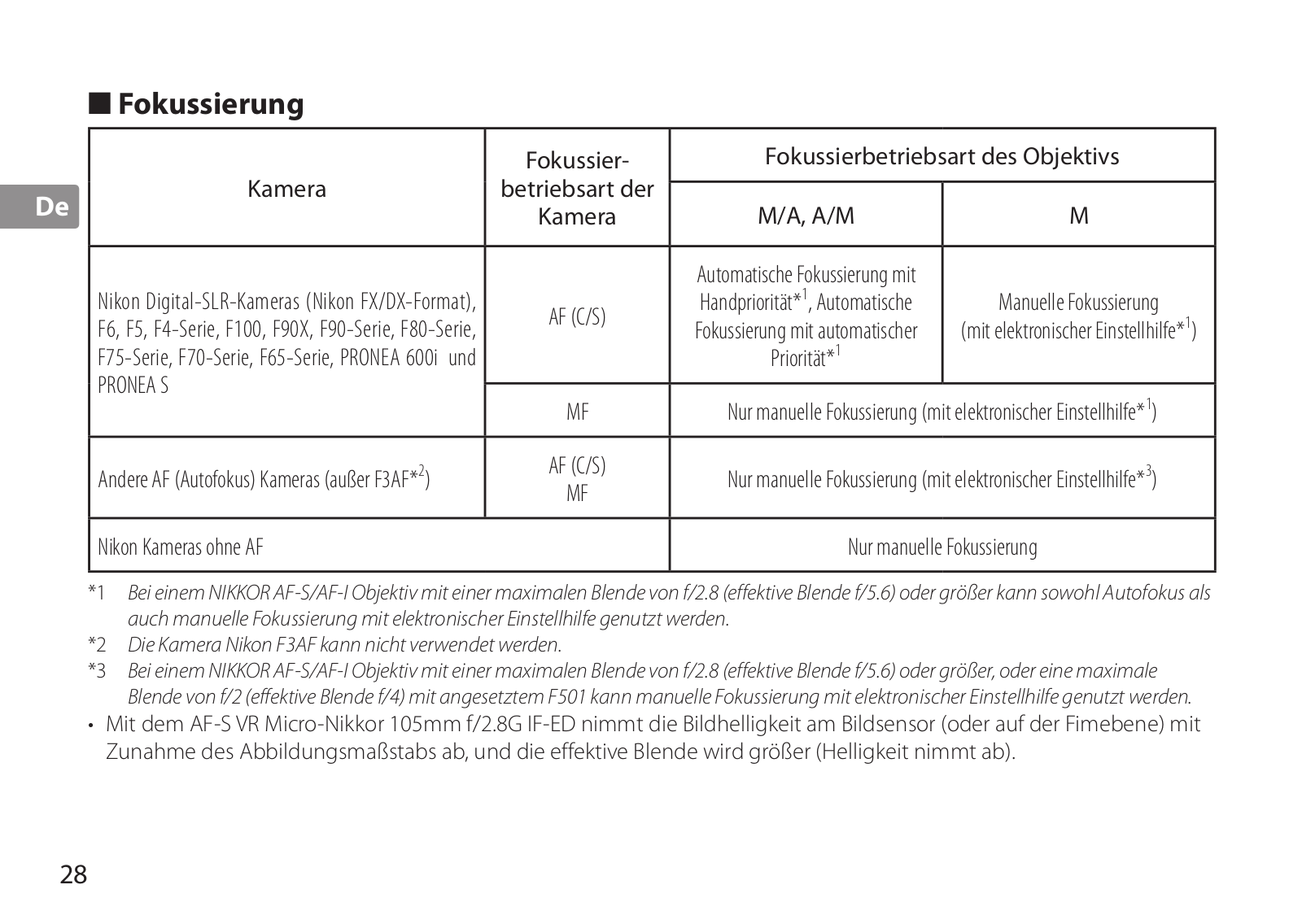
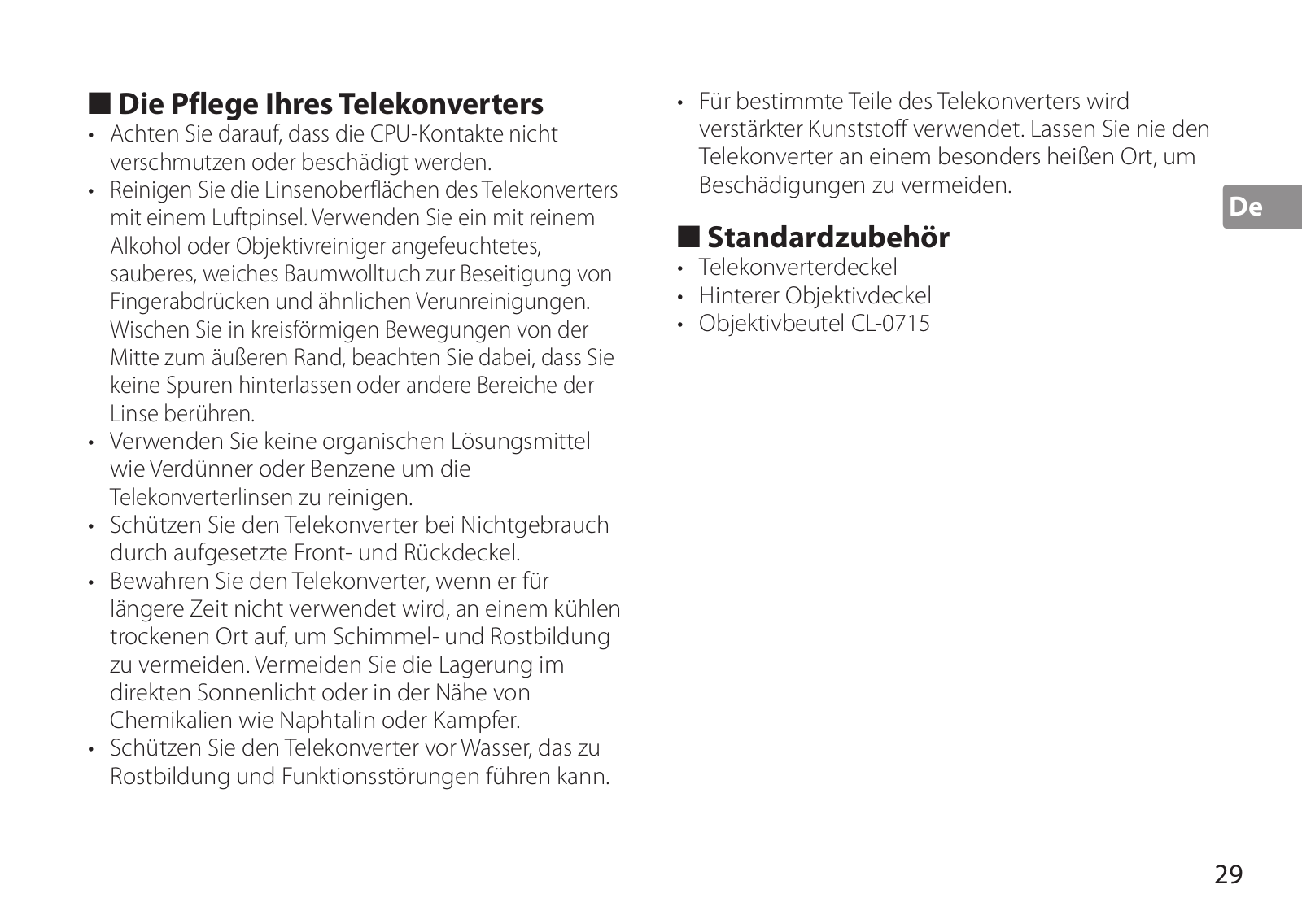







































































 Loading...
Loading...+ hidden pages